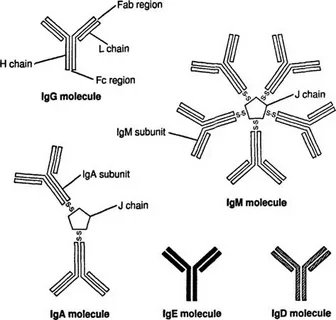A recent study published in Nature Communications has delved into the structure and function of Immunoglobulin M (IgM) antibodies found in rainbow trout, shedding light on the evolution of these crucial proteins. Antibodies play a vital role in our immune system, as they recognize and eliminate unwanted substances, known as antigens, from our bodies. However, the structure of these antibodies varies across different animal species.
In humans, IgM antibodies consist of five repeating units held together by a joining chain, forming a star-like shape. This unique structure allows IgM to bind to multiple antigens simultaneously, facilitating quick clearance. Furthermore, IgM is found not only in the blood but also in the mucosa, the moist tissue lining body canals such as the nose, mouth, and intestine.
Beth Stadtmueller, an assistant professor of biochemistry and member of the research team, explained that their laboratory focuses on studying the structure and functions of IgM antibodies, particularly in fish and mammals. The team aims to understand the differences in antibody assembly between these species and the reasons behind these distinctions.
One major difference between fish and human antibodies lies in the mucosa. In fish, the mucosal surface includes the skin, which is constantly exposed to the environment. This necessitates structurally stable antibodies to remain in the mucosa without getting washed away by water. Fish antibodies are also likely to encounter different types of antigens compared to humans, according to Mengfan Lyu, a graduate student in the research group.
Another notable disparity is the absence of a joining chain in fish antibodies. This chain, present in humans, lassos the tail ends of the five individual units to create a stable star-like structure. Fish IgM antibodies also have four repeating units instead of five. These differences prompted scientists to investigate how fish produce stable IgM antibodies and how they function. To elucidate the structure of fish IgM, the researchers focused on rainbow trout IgM for their studies.
Previous research mainly concentrated on understanding how antibodies bind to antigens or on the structures of antibodies with a single unit. Studies on polymeric antibodies, comprising multiple units like IgM, have been challenging until recently, when high-resolution cryogenic electron microscopy became available. This technique allowed the researchers to reveal the structure of polymeric antibodies, including IgM.
In humans, each repeating unit of IgM adopts a Y-shaped structure with two antigen-binding hands and a stalk. In its star-like form, the central IgM core consists of five stalks along with the joining chain. Fish IgM units resemble those of humans, and the researchers examined only the stalk of fish IgM due to difficulties in working with the full-length antibody. Through cryo-EM analysis, they discovered that the tail ends of the individual fish IgM units fold differently, causing them to assemble towards one side rather than the center of the IgM. Surprisingly, this unique assembly allows the units to interact effectively even without a joining chain.
According to Stadtmueller, this study marks the first characterization of fish antibody structure. The absence of a joining chain in fish IgM suggests a distinct assembly mechanism and structure compared to birds and mammals. This finding carries implications for antigen binding and functionality of IgM in fish and humans, highlighting potential differences between the two species.
The reasons behind the absence of a joining chain in bony fish remain unclear. It is possible that fish have evolved an alternative, more efficient method of assembling IgM, resulting in a more stable structure. Additionally, the absence of a joining chain may provide functional advantages, particularly considering that fish encounter different antigens and have distinctly composed immune systems. Lyu hypothesized that these factors likely contribute to the structural differences observed in fish IgM antibodies.
The research team is currently working on building the full-length IgM to further explore the fragments omitted in the present study. This research exemplifies how structural biology provides a solid foundation for understanding the functional diversity of antibodies. The team aims to apply their findings to the study of other polymeric antibodies, such as those found in birds, to develop novel therapeutic antibodies.
*Note:
1. Source: Coherent Market Insights, Public sources, Desk research
2. We have leveraged AI tools to mine information and compile it




